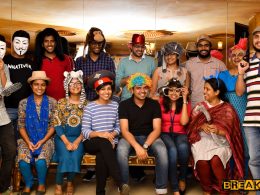Christian Lanng is the CEO of Tradeshift and the man behind Beyond Work. His goal is to eliminate purposeless jobs with the help of artificial intelligence. Instead of replacing people, he wants to help both the worker and the workplace come out ahead.
“Having spent a good deal of my life on enterprise software and implementing enterprise software into large companies, it became obvious over the past decade that two things are very clear,” Lanng shares.
“One is most enterprise software doesn’t make life better for the people who use it. In fact, it makes most people miserable. I don’t think you ever heard anyone say, ‘Yay, I’m going to do my expenses,’ or ‘I’m going to log into Workday,’ or anything like that. I think the other thing I think is relatively problematic is it’s very doubtful that it’s actually delivered on a lot of the value that’s been promised.
“With Beyond Work, we saw opportunity to use AI and especially the next generation of AI tools out there — large language models — to try to make work both better and more productive, meaning both the workplace and the worker win in how they work.”
Work has changed drastically thanks to software, and these changes aren’t necessarily for the better. Fake digitalization has created entire jobs where people push buttons in applications, essentially wasting time doing what a computer could be doing. Giving people a position may quell a certain financial need for an employee, but it’s ultimately not serving anyone to pretend that they have an impact beyond the rote actions they’ve learned to perform day after day.
What If …
Christian Lanng asks very different questions about what software can do, particularly how AI programs can transform people’s lives. Beyond Work is an AI platform that simplifies enterprise tasks, and it’s made to help people build their vision from scratch. Lanng sees this as the steppingstone to more intentional work and a way to infuse meaning into everyday employment that’s often anything but inspiring. By automating tasks, companies can reduce the kind of tedium that leads to a loss of morale and a deep rut in company culture.
Beyond Work recently made headlines after raising $2.5 million, and that appears to be the tip of the iceberg for Lanng’s unique concept. Today, his top concern is building a product that customers will actually want to use. He’s been open about how past versions of enterprise software have fallen far short of its promises. He believes this is partially due to how salespeople are incentivized. “A lot of the alignment right now in software is not there because salespeople are incentivized to sell many years ahead,” Lanng explains. “That means you end up with worse software because the enterprise windows, they don’t prioritize what the customers need.
“One of the things we’ve done with Beyond Work is to try to really create that true alignment on value with our customers on: How do we pair what we built with what the customers need? That’s both in the commercial model, that’s in how we go to market, and that’s how we build the product. But that’s a big part of our early journey here.”
This is critical when the world is now deeply entrenched in AI hype. Everywhere you look, there’s a new prediction and it’s stoking hopes and fears in equal measure. There’s a disconnect when it comes to predictions versus realities. The demos on social media are mainly designed for flash, as opposed to illustrating any practical benefits. Beyond Work is embarking as a company to break through the chaos with a more airtight value prop.
If you’re going to eliminate purposeless jobs, it can’t be done with a hacksaw. There needs to be a sophisticated platform where everyone stands to gain, not just the people at the top of the food chain.
Removing the Tedium
There are only so many details right now about Beyond Work, but it’s shaping up to streamline the workforce in a new way. Despite all the promises of automation, most everyday workers don’t currently have access to these features. Should they want to save time, they have to call IT and run through a process. Moreover, they’ll likely be told by the end that the system can’t quite do what they’re asking. With Beyond Work, it will be as simple as telling the computer to perform different tasks with simple prompting. At Beyond Work, the staff is busy learning just how far they can stretch this technology and how it can be scaled to meet the needs of various departments.
Lanng’s approach is different from programming systems because he’s using a knowledge-based model that can work through issues rather than running up against the same walls. This has translated to the user experience being developed in real time rather than having to be tweaked again and again based on feedback (and, more often, complaints) about how software has inadvertently created more work rather than solved multiple problems at once.
Collaboration Between AI and Humans
Beyond Work is eliminating purposeless jobs, but it’s not replacing the valuable work that humans do. To illustrate what he means by this, Christian Lanng says, “It’s a little bit like you can try to make a self-driving car. You can go the way that Google did and try to build the perfect self-driving car that can do everything. They’re still testing and it’s still not out there. It’s now 15 years in and they’re almost there, but the last 5% is just very expensive, very hard, and always just five years away.
“Or you can do like Tesla, who put a car out. In the beginning, it’s OK, it can drive in the middle of the road, then it can do some more. Now it can change lanes, now it can do more and more and more. Sort of the bottom-up approach. It’s either top down or bottom up.
“I think the real-world approach that we believe in is the bottom-up approach. We don’t need AI to do everything. Let’s just do as much as we can and take the tedious work away.”
Keeping Humans at Work
Christian Lanng has defined his career by building products from scratch and he openly admits that this has led to burnout. When he looks back, he can see just how meaningless a lot of that effort was, even if he knew that it had to be done. “I think a lot of that came just also from doing work that in many ways when you really think about it is without purpose,” he says. “It’s just stuff that honestly doesn’t really serve a whole lot of points other than it’s sort of you’ve got to do it. I think for me, that was a big inspiration when I was thinking about what we wanted to do Beyond Work.”
The inspiration behind Beyond Work was partially based on his experience, but it was also about how the workforce is changing. For back-office workers in their 50s and 60s, there are going to be very few people willing to replace these jobs.
Lanng went to school for sociology, and he knows the more considerable impact behind a purposeless job. These jobs lower people’s expectations of themselves both at and outside work. They can start to think that all they’re capable of doing is going through the motions. He sees AI as a beacon that can shift the paradigm in a better direction.
Fast Paced, High Stakes
Building the best possible product was how Christian Lanng managed to make Tradeshift net a reported valuation of over $2 billion, but he knows that he’s treading in unknown waters. AI is incredibly fast-paced, with endless academic articles entering the zeitgeist and seemingly endless competitors hoping to make it to market fast enough for early adopters.
What makes Beyond Work different is the philosophy behind it, one that’s less about profit and more about what the platform can do to improve the lives of people from different backgrounds. Says Christian Lanng, “I can’t remember a time in 30 years of being in product and software that I’ve seen an evolution like this and that’s really, really interesting.”









